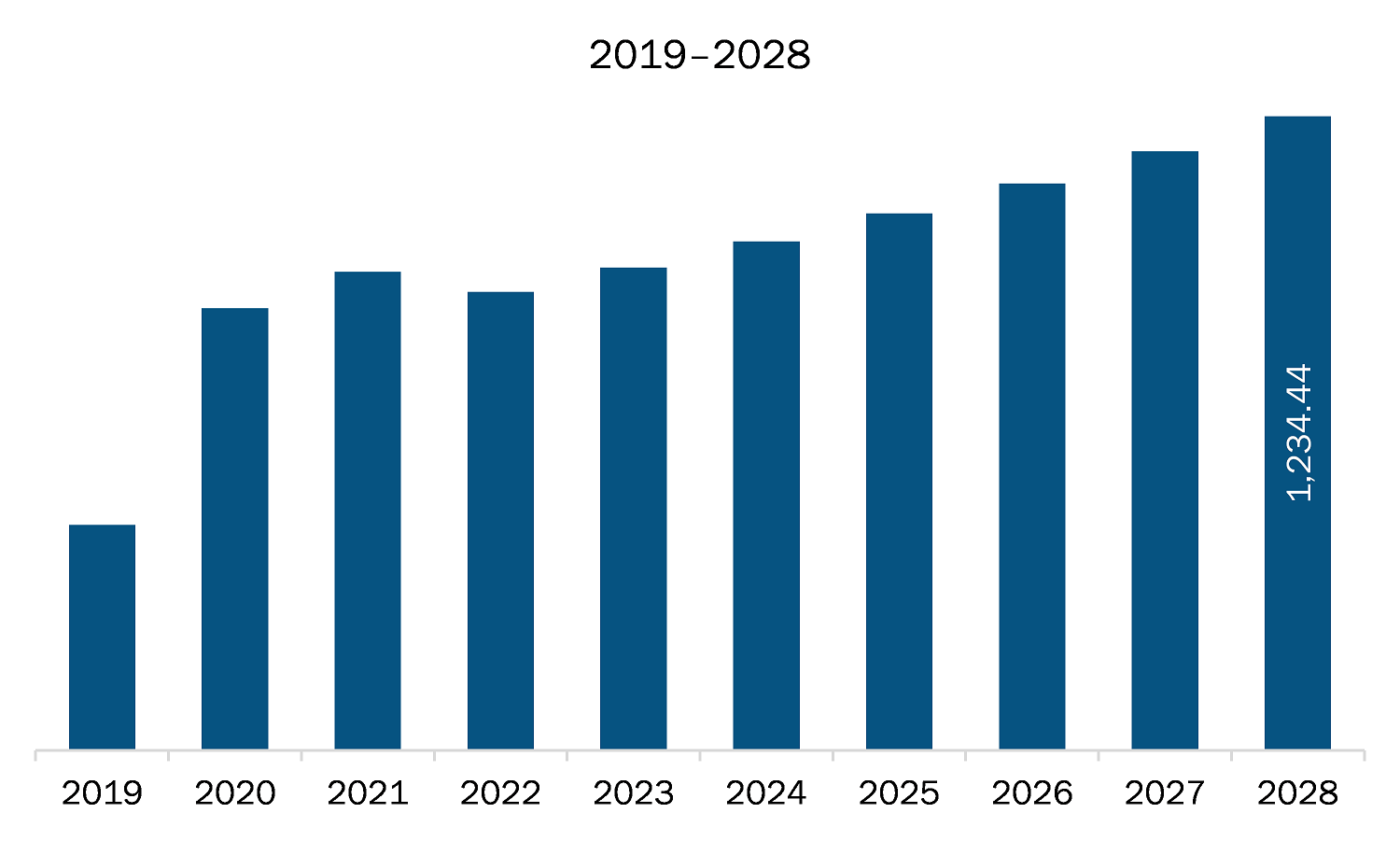The virology market in APAC is expected to grow from US$ 931.92 million in 2021 to US$ 1,234.44 million by 2028; it is estimated to grow at a CAGR of 4.1% from 2021 to 2028.
China, Japan, India, South Korea, and Australia are major economies in APAC. Countries in Asia Pacific is attractive outsourcing locations for the pharmaceutical and biopharmaceutical industries across the world. Low manufacturing and operating costs and recent growth in the pharmaceutical industry in China and India are key factors driving the growth of the virology-related markets in these countries. Moreover, the growing domestic market and its pipelines are opening new access for the manufacturing of generic drugs in Asia Pacific. In addition, several contract-based organizations are expanding their manufacturing capacities in developing nations to meet the rising demand for products, such as vaccines. Thus, the emerging markets are likely to create lucrative opportunities for the growth of the APAC virology market in the coming years.COVID-19 has created an unprecedented public health emergency globally. It has demonstrated, emerging infectious diseases represent an existential threat worldwide. Rapid urbanization, deforestation, intensive agriculture, livestock rearing practices, and globalization are increasing opportunities for animal-to-human contacts and epidemics in the region. Urbanization is creating greater potential for epidemics and pandemics, as a large population now lives in cities. In addition, many countries were able to contain the COVID-19 based on previous epidemics. For instance, the South Korean central government began investing in domestic R&D of diagnostic reagents necessary for infectious disease testing. From 2017, it has invested approximately US$ 25 million in infectious disease diagnosis technology. The testing technologies developed by commercial manufacturers through government investments in R&D, including artificial intelligence (AI), proved critical for the government’s rapid launch of an effective COVID-19 response strategy. However, The COVID-19 pandemic has had a major impact on the essential HIV health services in the South East Asia Region, putting the growth at risk over the last two decades. COVID-19 has disrupted essential services causing considerable delays in the delivery of medicines and other health commodities. Changing priorities for HIV clinics and healthcare workers, travel restrictions, non-availability of public and limited private transportation, and worsening socio-economic contexts affected the continuity of essential HIV services. In the Philippines, more than 70% of delays or reductions in the number of visits to HIV clinics have been recorded since the pandemic, according to a survey conducted by Gilead Sciences. HIV and AIDS represented the most recent global pandemic, and the Global Fund has made enormous progress over the past 20 years. According to the study, over 82% of prescribers in India reported a decrease or delay of visits of people living with HIV. COVID-19 has also negatively impacted the uptake of HIV tests, and around 46% of the at-risk population reported a decrease in taking HIV tests during COVID-19. The main reasons for reduced testing were exposure to COVID-19 (62%) and travel restrictions (46%), as HIV tests were mostly only accessible at point-of-care. Therefore, it has negatively affected HIV care and other virus infections.
With the new features and technologies, vendors can attract new customers and expand their footprints in emerging markets. This factor is likely to drive virology market. The APAC virology market is expected to grow at a good CAGR during the forecast period.

- This FREE sample will include data analysis, ranging from market trends to estimates and forecasts.
APAC Virology Market Segmentation
APAC Virology Market – By Type
- Diagnostic Test
- DNA Virus Testing
- RNA Virus Testing
- Others
- Viral Infection Controlling Techniques
- Active Prophylaxis
- Passive Prophylaxis
- Antiviral Therapeutics
- Virucidal Agents
- Antiviral Agents
- Immunomodulators
- Interferons
APAC Virology Market – By Application
- Skin and Soft Tissue Infections
- Respiratory Tract Infections
- GI Tract Infections
- Sexually Transmitted Diseases
- Urinary Tract Infections
- Others
APAC Virology Market – By End User
- Hospitals
- Diagnostic Laboratories
- Pharmaceutical and Biotechnological Companies
- Research and Academic Institutes
APAC Virology Market- By Country
- China
- Japan
- India
- Australia
- South Korea
- Rest of APAC
APAC Virology Market-Companies Mentioned
- Abbott
- AbbVie Inc.
- F. Hoffmann-La Roche Ltd.
- Gilead Sciences, Inc.
- GlaxoSmithKline Plc
- Illumina, Inc.
- Johnson and Johnson Services, Inc.
- QIAGEN
- Siemens AG
- Thermo Fisher Scientific Inc.
Asia Pacific Virology Report Scope
| Report Attribute | Details |
|---|---|
| Market size in 2021 | US$ 931.92 Million |
| Market Size by 2028 | US$ 1,234.44 Million |
| CAGR (2021 - 2028) | 4.1% |
| Historical Data | 2019-2020 |
| Forecast period | 2022-2028 |
| Segments Covered |
By Type
|
| Regions and Countries Covered |
Asia-Pacific
|
| Market leaders and key company profiles |
|
- Historical Analysis (2 Years), Base Year, Forecast (7 Years) with CAGR
- PEST and SWOT Analysis
- Market Size Value / Volume - Regional, Country
- Industry and Competitive Landscape
- Excel Dataset
Recent Reports
Testimonials
Reason to Buy
- Informed Decision-Making
- Understanding Market Dynamics
- Competitive Analysis
- Identifying Emerging Markets
- Customer Insights
- Market Forecasts
- Risk Mitigation
- Boosting Operational Efficiency
- Strategic Planning
- Investment Justification
- Tracking Industry Innovations
- Aligning with Regulatory Trends






















 Get Free Sample For
Get Free Sample For